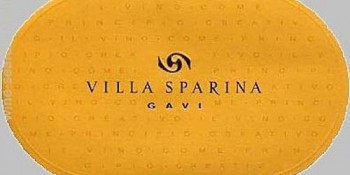More white wine, Bill? Yes, winos, more white!
It’s officially spring in the Northern Hemisphere, and that means it’s time to add whites (and rosés) to your cellar (or cupboard, or cardboard box you still haven’t moved from the living room). Italy has a long tradition of winemaking (and wine drinking), and though reds like Chianti usually gets most of the attention, interesting whites abound as well.
Pinot Grigio is probably the Italian white wine you’ve heard about most (or maybe the only one). This wine is commonly scorned by wine snobs for being “uninteresting” — and many are, but there are plenty that have something good to offer. This is actually the same grape as Pinot Gris, which has long been popular in Alsace, and has also become Oregon’s favorite white in recent years. Perhaps, some sneer at Pinot Grigio because of how unique and intense the spicy Pinot Gris from Alsace can be in comparison to the lighter, mellow Pinot Grigios. Ultimately, however, Pinot Grigio is much more widely available, mostly because of the volume advantage it has over Pinot Gris.
Here in the United States, Santa Margherita is the Pinot Grigio that many casual wine drinkers gravitate toward, and if you haven’t tried it before, you probably should. It has a fresh, clean citrus fruit character with good concentration. But after you’ve had one bottle, try something else! Expand your palate past the wine that you see the most in television commercials (like Santa Margherita). Is it pretty good? Yes. Great? No. They’ve done a fantastic job marketing it, driving up demand, and now it’s overpriced.
From Sicily, for example, the 2009 Antinori Pinot Grigio Santa Cristina has a bright, aromatic nose of apples and peaches, and a dry acidic palate of lemon, lime, passion fruit, and minerality. It’s a great value at only $12.
Vermentino is grown far less than Pinot Grigio but makes for a more interesting wine. The northern Italian regions of Liguria and Piedmont are where you will find it grown most, along with the islands of Sardinia and Corsica and, in recent years, in the Languedoc region of southern France. Usually light-bodied and very aromatic, Vermentino is normally floral on the nose with crisp lemony flavors on the pallet.
Cantine Lunae Colli di Luni “Lunae” is a fantastic Vermentino from Liguria, northwest of Tuscany along the coast. The 2009 has a really beautiful candied peach character on the nose, tossed with aromatic white flowers (but not perfumey) and honey. Fresh peach, apple, herbs, and citrusy wet granite make up a great acidic flavor profile.
Sella & Mosca “La Cala”, from the island of Sardinia, is less complex, but perhaps more refreshing, with its bone-dry citrus flavor profile, nice minerality, and long finish. There’s also an interesting salinity in this wine, probably due to the vineyards’ proximity to the Mediterranean Sea. This is a classic wine from a classic producer, and is popular in Sardinia as well as in the States.
Finally, I suggest trying Gavi wines. Named after the town of Gavi and made from the Cortese grape in the northern region of Piedmont (Piemonte in Italian), north of Liguria, Gavi is known for being a fantastic pairing with fresh seafood. Gavi is sometimes labeled Cortese di Gavi or, if grown right near the town of Gavi, it might be labeled Gavi di Gavi. The light-to-medium-bodied wines are very pale in color and often exhibit vibrant citrus fruit flavors. In the same way that Riesling is the dominant white wine grape in Germany, Cortese is the dominant white wine grape in the Piedmont (though it is vastly overshadowed by Barolo and Barbaresco, the big, powerful Piedmont reds). Gavis are legitimate contenders in the white wine world, but for whatever reason, they don’t get the exposure or appreciation they deserve.
On a bottle of Banfi’s Principessa Gavia Gavi, you’ll find the following legend (though the wine in that bottle is nothing great): Supposedly in the 6th century, Princess Gavia fell in love with a soldier who was guarding her. Her father, Clodomir, King of the Franks, forbade their marriage, so the lovers ran off to a remote village in what is now northern Italy. After enjoying the local white wine, the newlywed couple let it slip who they were and were taken back to the king. But when the king realized their true love for each other, he forgave them, blessed their marriage, and named both the village and its wine after the Princess — Gavi.
Whether you believe that or not, the Villa Sparina Gavi di Gavi is a great place to start. The nose is really pretty, with honeycomb, melon, and fresh-cut white flowers. On the palate, there’s a really great balance between acidity and creaminess, with flavors of apples and cantaloupe.
An even better offering is the Gavi di Gavi by Franco M. Martinetti. The nose has a great pineapple and coconut combination, along with some lime. The palate has some very concentrated flavors: pineapple, lemon/lime, honeydew, even watermelon, with a big finish. Both wines are worth the $16 to $19 price tag, and both are excellent paired with fresh seafood and shellfish dishes.
There is life beyond Chardonnay, white wine drinkers, and there are plenty more Italian white wine options beyond these three, but they’re a good place to start. Sniff, swirl, taste!
